
The traffic rules describe how a road user must act on the public road, which includes obligations but also advice on how to drive sensibly and safely. All road users must know and apply the traffic rules.
There are many dangers on public roads, drivers have to recognize these dangers and respond in the right way. Here you will find an overview of the most common hazards.
Alcohol and driving a vehicle are a very dangerous combination. Alcohol reduces attention, assessment and reaction capacity. A drunk driver is not only a danger to himself, but also to other road users. That is why the police often organize alcohol checks, alcohol intoxication is measurable and punishable from a certain level.
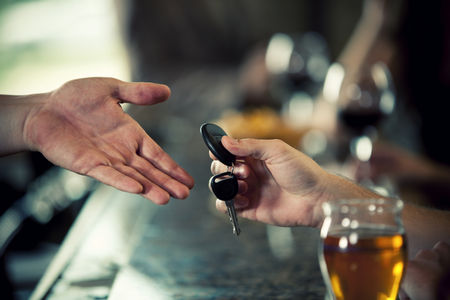 An alcohol control will not be asked to passengers or pedestrians.
An alcohol control will not be asked to passengers or pedestrians.
 During a breath test the concentration of alcohol is measured with a breathalyzer.
During a breath test the concentration of alcohol is measured with a breathalyzer.
Reduce your speed in rain, snow and sleet. The road surface is much smoother in bad weather conditions, so the tires have less grip. In case of a wet road surface it is best to reduce your speed by about 15 km / h. With snow you can best halve your speed. Use snow tires or snow chains when there is snow on the road. On ice you have to drive very carefully, because a vehicle is not controllable on ice. It is therefore very dangerous to drive on ice.
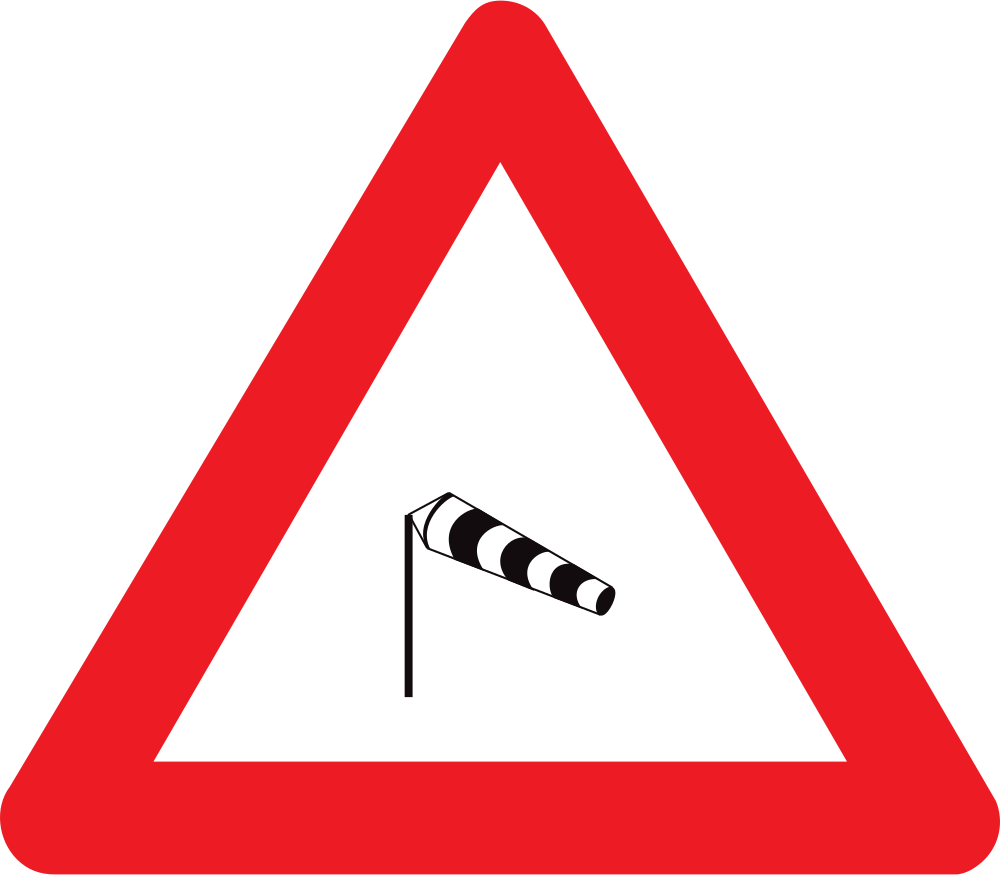 Warning for heavy crosswind.
Warning for heavy crosswind.
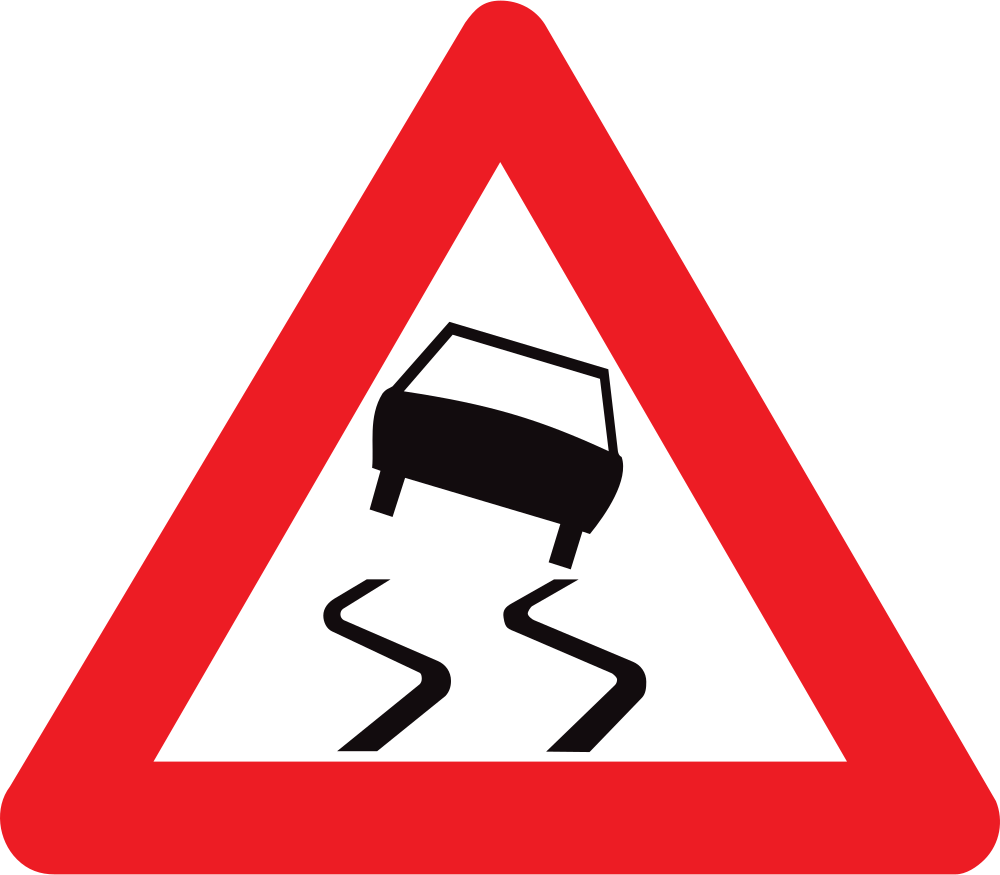 Warning for a slippery road surface.
Warning for a slippery road surface.
In roadworks, temporary orange colored lines are often painted on the road surface. The orange stripes then replace the white ones.
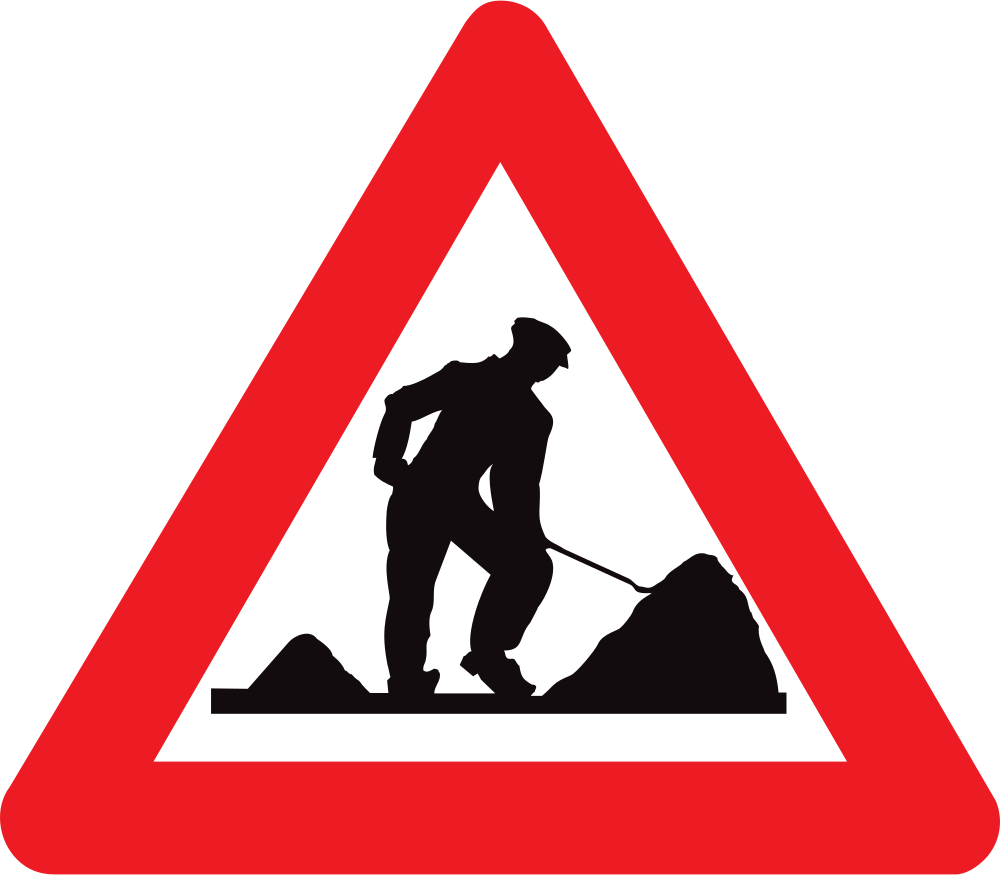 Warning for roadworks.
Warning for roadworks.
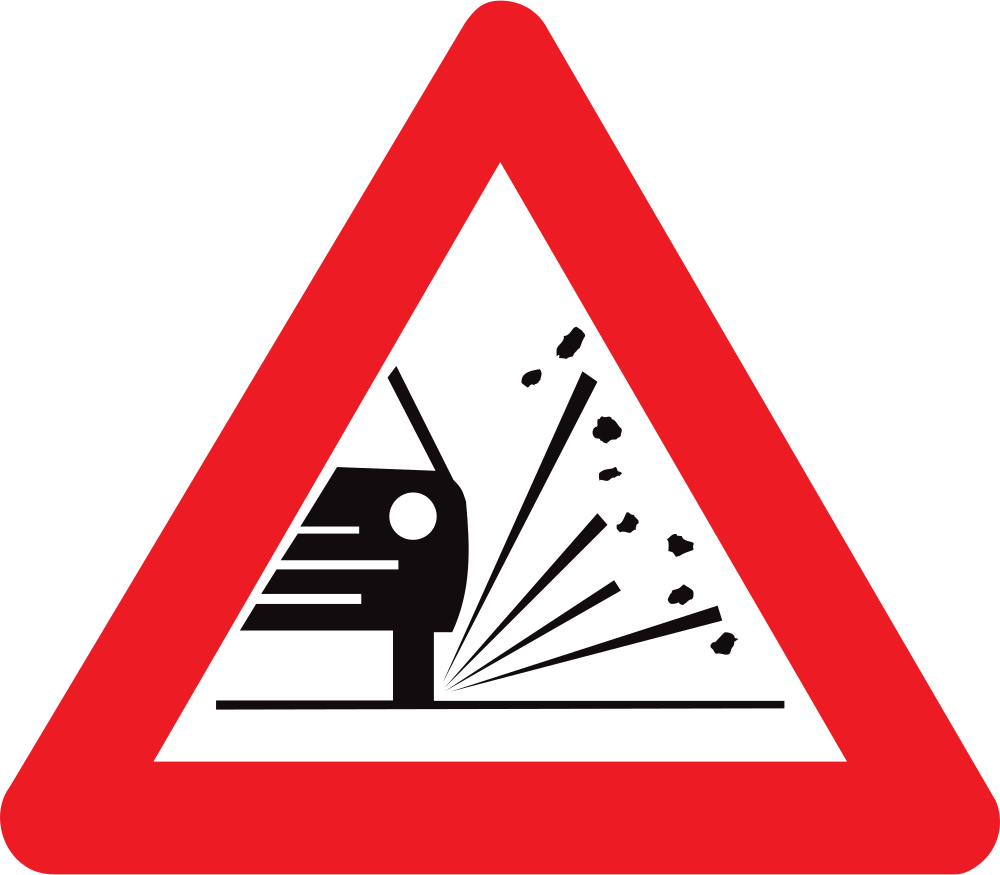 Warning for loose chippings on the road surface.
Warning for loose chippings on the road surface.
Traffic congestion is a condition on transport that is characterised by slower speeds, longer trip times, and increased vehicular queueing. Traffic congestion on urban road networks has become increasingly problematic since the 1950s. When traffic demand is great enough that the interaction between vehicles slows the speed of the traffic stream, this results in some congestion. As demand approaches the capacity of a road, extreme traffic congestion sets in. When vehicles are fully stopped for periods of time, this is known as a traffic jam. Traffic congestion can lead to drivers becoming frustrated and engaging in road rage.
 In traffic jams on a motorway, dynamic traffic signs are often used to reduce the speed.
In traffic jams on a motorway, dynamic traffic signs are often used to reduce the speed.
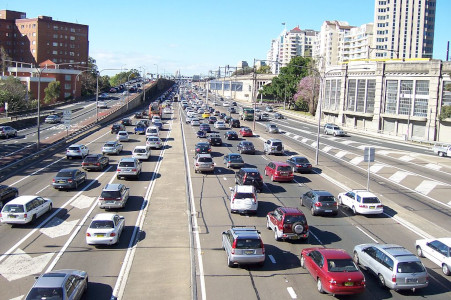 Keep sufficient distance in case of a traffic jam, in case of a sudden traffic jam you can warn other road users with the 4 turn signals.
Keep sufficient distance in case of a traffic jam, in case of a sudden traffic jam you can warn other road users with the 4 turn signals.
A blind spot in a vehicle is an area around the vehicle that cannot be directly observed by the driver while at the controls, under existing circumstances. Blind spots exist in a wide range of vehicles: aircraft, cars, motorboats, sailboats, and trucks. Other types of transport have no blind spots at all, such as bicycles, horses, and motorcycles. Proper adjustment of mirrors and use of other technical solutions can eliminate or alleviate vehicle blind spots.
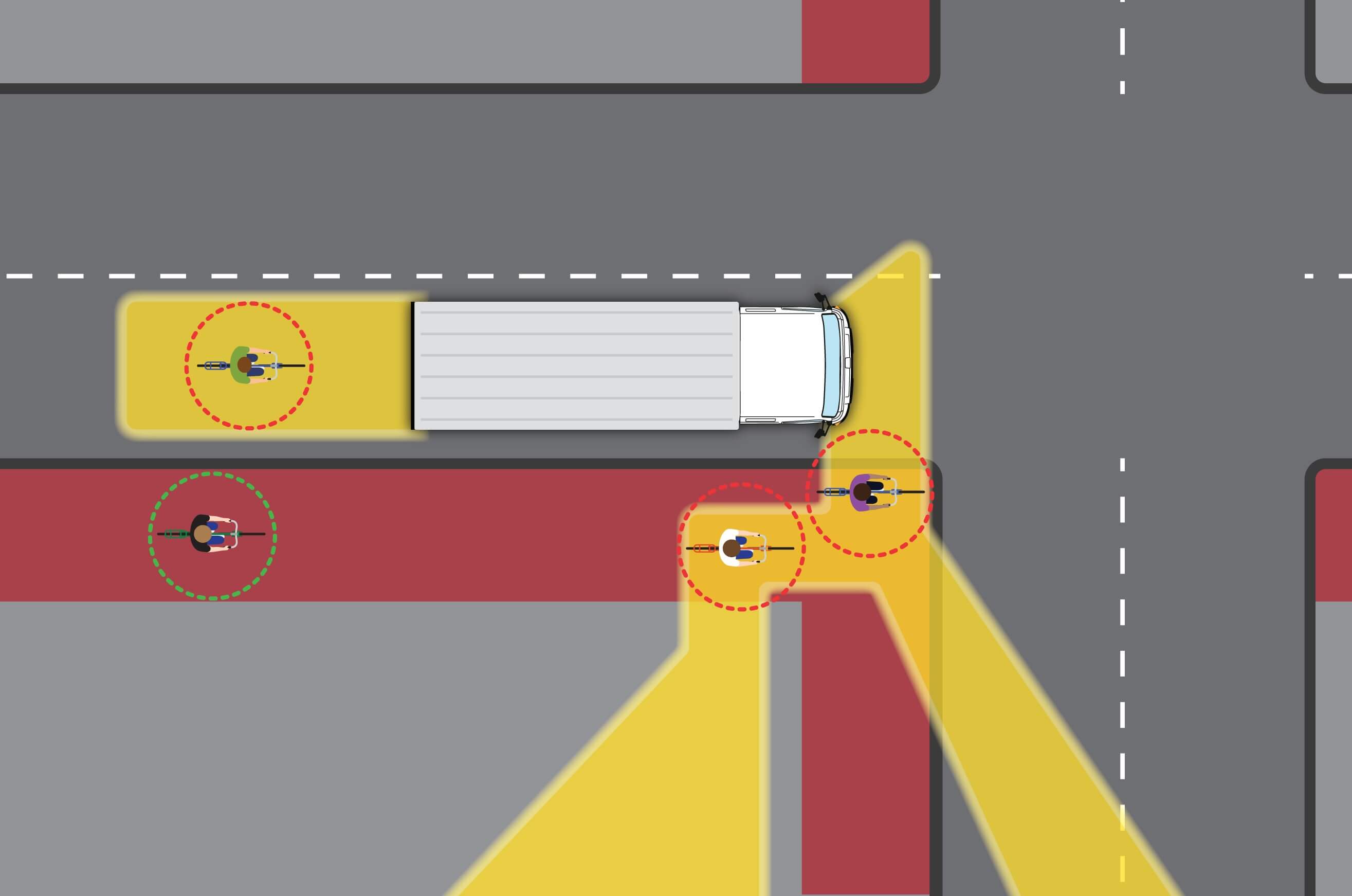 The blind spot is usually most dangerous with large vehicles such as trucks, buses and tractors.
The blind spot is usually most dangerous with large vehicles such as trucks, buses and tractors.

Wrong-way driving is the act of driving a motor vehicle against the direction of traffic. It can occur on either one- or two-way roads, as well as in parking lots and parking garages, and may be due to driver inattention or impairment, or because of insufficient or confusing road markings or signage, or a driver from a right-hand traffic country being unaccustomed to driving in a left-hand traffic country. People intentionally drive in the wrong direction because they missed an exit, for thrill-seeking, or as a shortcut.
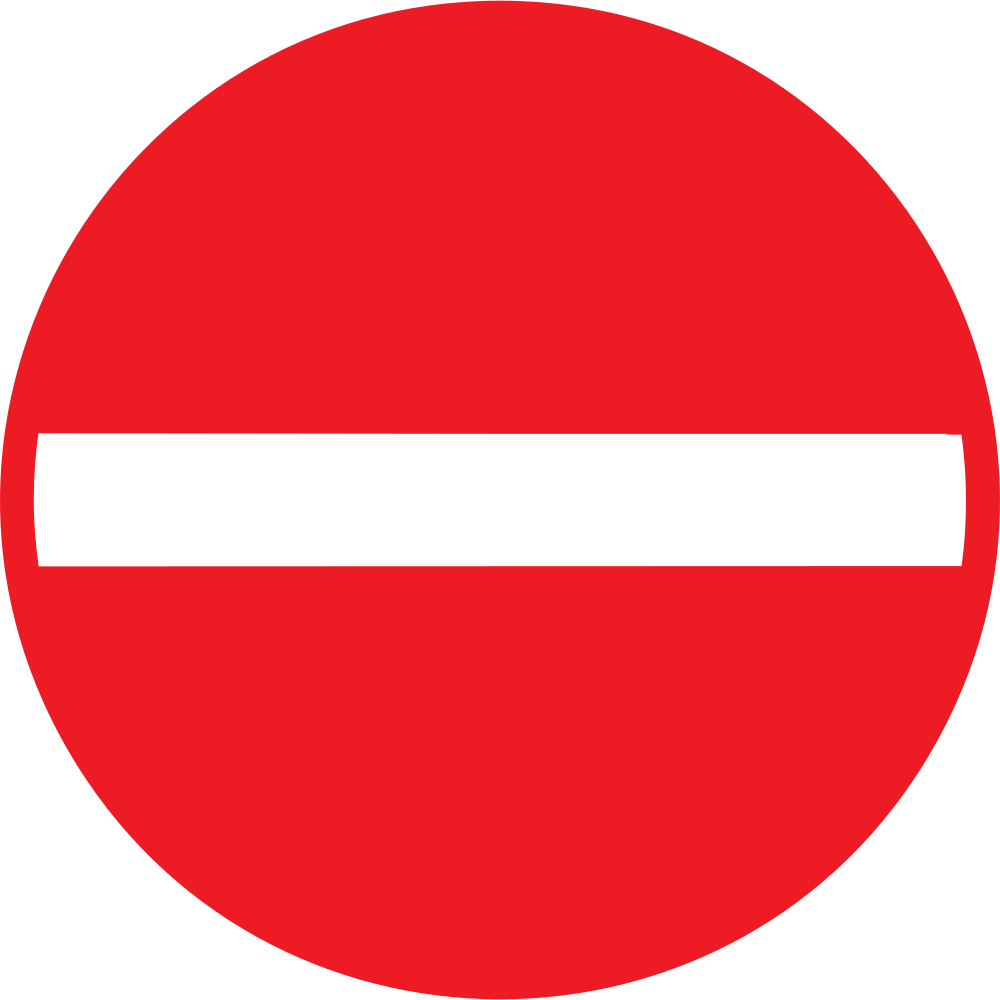 Direction prohibited
Direction prohibited
(road with one-way traffic).
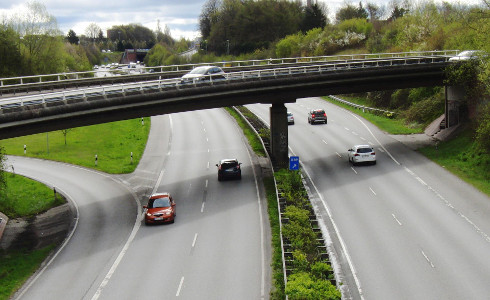 The black car that is red just drove past, a wrong-way driver.
The black car that is red just drove past, a wrong-way driver.
Crossing animals can cause dangerous traffic situations. In green areas it often happens that animals cross the road.
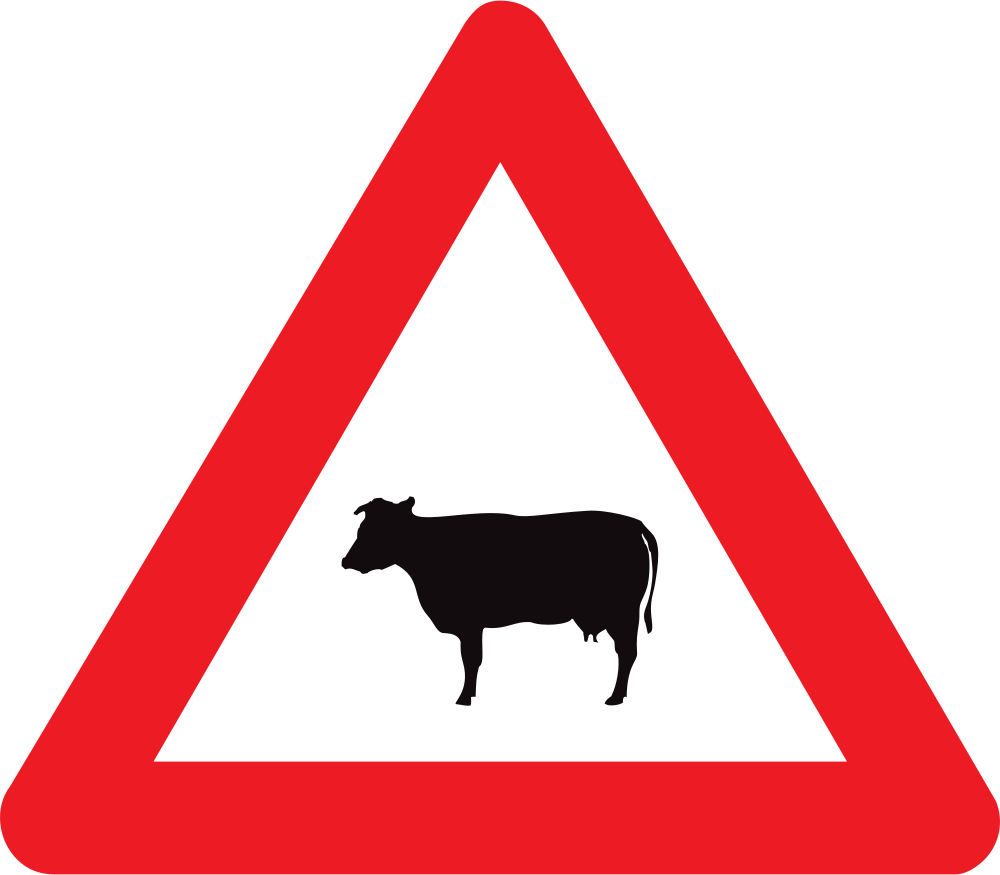 Warning for cattle on the road.
Warning for cattle on the road.
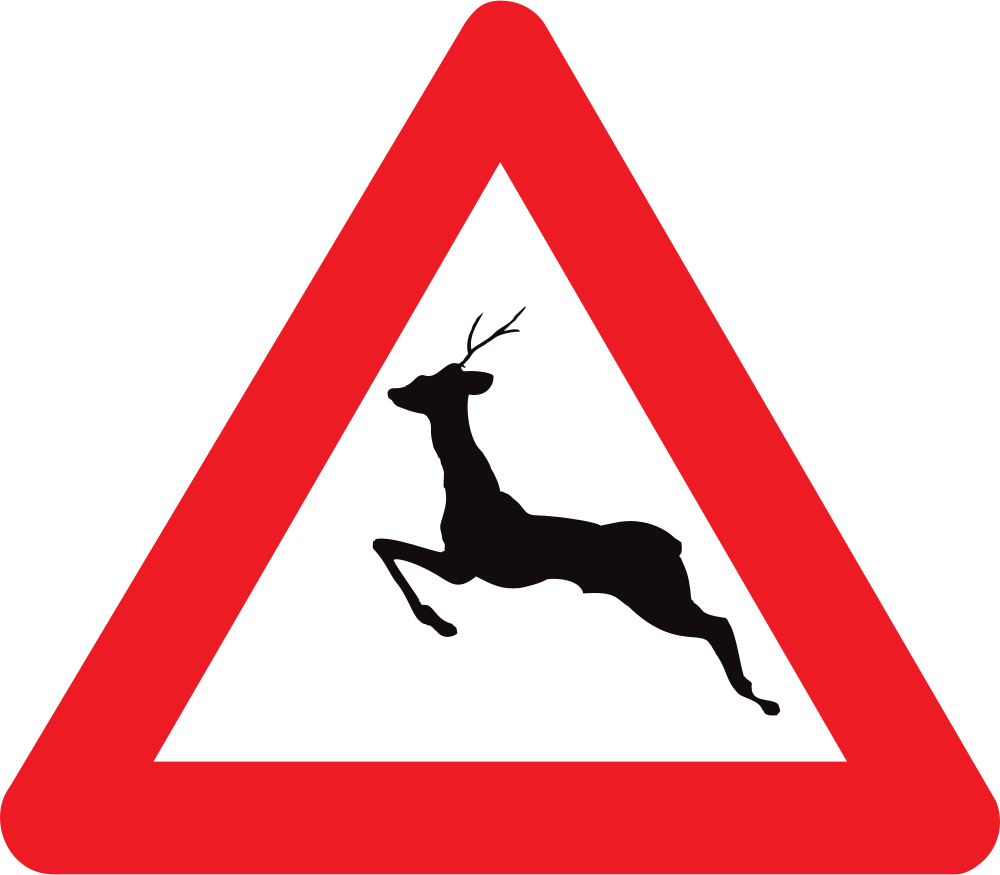 Warning for crossing deer.
Warning for crossing deer.
A driver must concentrate on driving his vehicle. A driver is distracted when something pulls away his attention from the road, so he can focus less on driving his vehicle. A distracted driver is at greater risk of being involved in an accident. With the known consequences (property damage, injuries, deaths).
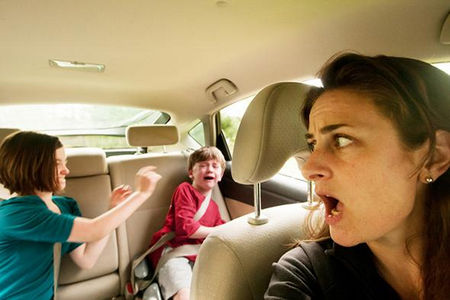 Children in the backseat or other passengers can be distracting.
Children in the backseat or other passengers can be distracting.
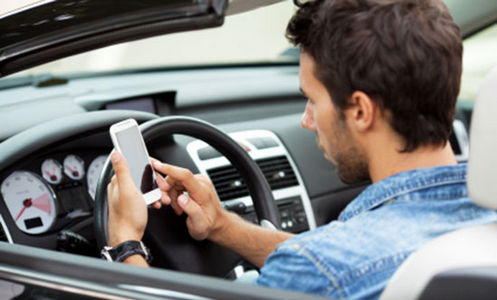 Smartphones cause accidents, put your electronic devices in car mode.
Smartphones cause accidents, put your electronic devices in car mode.
Driving a vehicle is a complex and underestimated skill. There are many health problems that can affect your ability to drive. A stiff neck, a cough or pain in the legs can cause you to react more slowly. If you do not feel well, let someone else drive. Medication can also have a major impact on your driving. Consult your doctor if you think you may have a condition that would prevent you from driving safely.
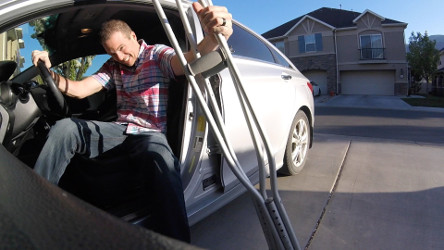 If you think you may have a condition that would prevent you from driving safely, consult your doctor.
If you think you may have a condition that would prevent you from driving safely, consult your doctor.
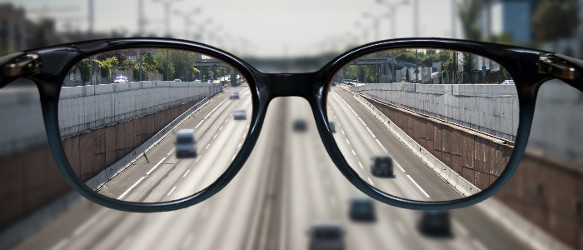 Visual impairment and night blindness are common, consult your doctor if you have any complaints.
Visual impairment and night blindness are common, consult your doctor if you have any complaints.